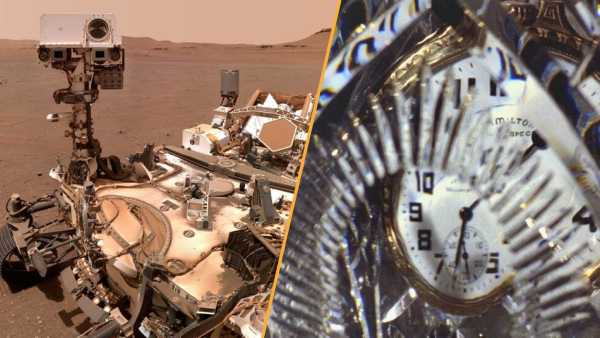
In this week's science news, we covered the most compelling evidence yet for life on Mars, confirmation of Stephen Hawking's black hole theory, a toxic barrel graveyard in Los Angeles and mysterious lights dancing on a camera in Patagonia. (Image credit: NASA; Getty Images) Jump to:
This week's science news was out of the ordinary: NASA announced that colorful rocks found on Mars may be the clearest sign yet that life once existed on the Red Planet.
All of the rocks have leopard-like spots, which, on Earth at least, are telltale signs of chemical reactions used by microbes to generate energy. This, along with the presence of organic compounds and evidence that water once flowed through the rocks, has sparked serious interest among scientists.
But don't open the bottle of champagne just yet, as there's still a chance the traces could have been left by inorganic processes, meaning we'll have to wait for the politically-threatened Mars sample return mission before we know for sure.
You may like
-

Science News This Week: A 400-Year Journey to Alpha Centauri and the Evil AI That Could Make Us Think About It
-
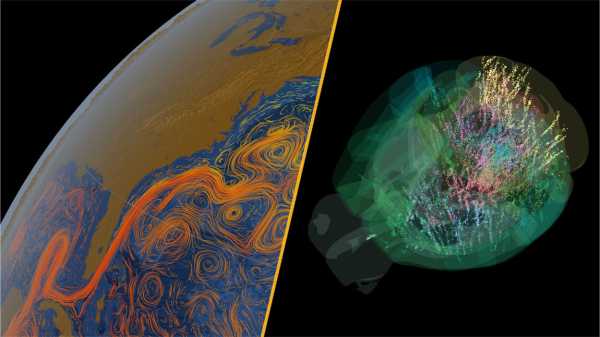
This week's science news: A key Atlantic current is nearing its end, the world's largest iceberg breaks apart, and a mouse brain is redefining neuroscience.
-
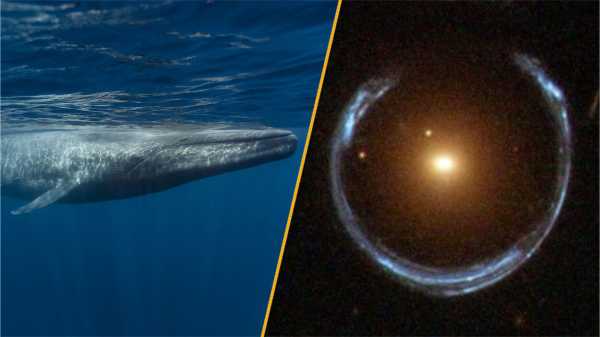
Science News This Week: Black Holes Galore and Blue Whales That Still Sing
Fortunately, this week brought even more compelling news from the Laser Interferometer Gravitational-Wave Observatory (LIGO). By detecting faint ripples in spacetime caused by the merger of two distant black holes, the detector has finally confirmed Stephen Hawking's long-standing theory that cosmic monsters link general relativity to quantum mechanics.
Tying these two strands together in a theory of everything could be accomplished with just one trip to a black hole. But it would require some serious cellular engineering, judging by the news of accelerated aging of human stem cells in space. Meanwhile, our planet will have to pass close to the asteroid Apophis and endure some strange solar eruptions.
The mystery of the Los Angeles “halo” barrels is beginning to unravel. Scientists finally know what's inside the mysterious “halo” barrels sunken off the coast of Los Angeles.
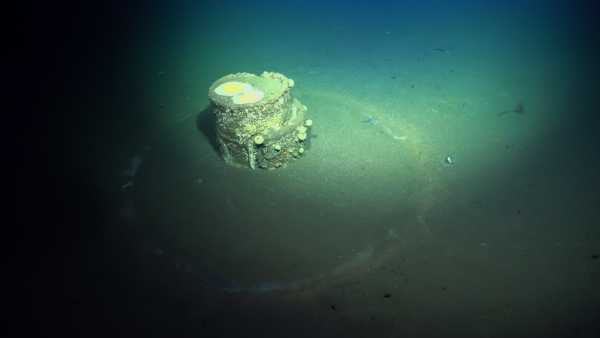
In 2020, a massive barrel cemetery was discovered off the coast of Los Angeles. Scientists finally have answers to the question of what might be inside them.
They emerged in 2020, under the beams of deep-sea robots operating off the coast of Los Angeles — a graveyard of 27,000 barrels, surrounded by halos of whitish toxic sludge that many then believed to be the banned pesticide DDT. But the exact number of barrels, who dumped them, and what they might have contained remain unknown.
But a new study has shed light on the murky situation. By analyzing samples taken from five barrels, the researchers found that they contained not DDT but a caustic alkaline waste capable of killing off much of the surrounding marine life. They also found chemical reactions that form the halos themselves, which they will use to determine the overall extent of the toxic spill.
Find out more news about planet Earth
— A “new” island has emerged from melting ice in Alaska
— “Serious negative and unintended consequences”: Polar geoengineering is not the answer to climate change.
You may like
-
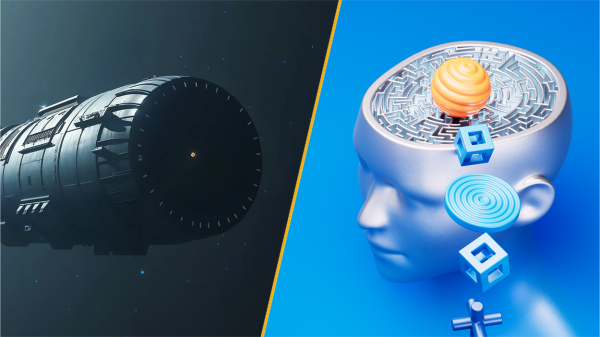
Science News This Week: A 400-Year Journey to Alpha Centauri and the Evil AI That Could Make Us Think About It
-
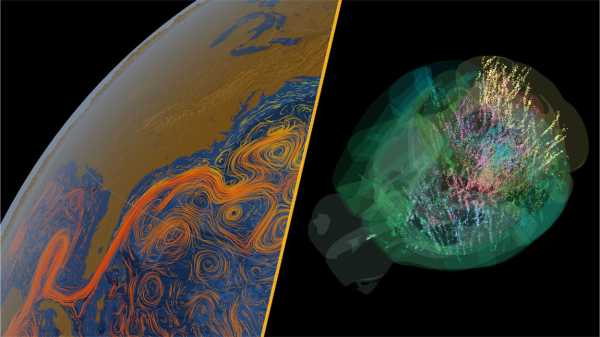
This week's science news: A key Atlantic current is nearing its end, the world's largest iceberg breaks apart, and a mouse brain is redefining neuroscience.
-
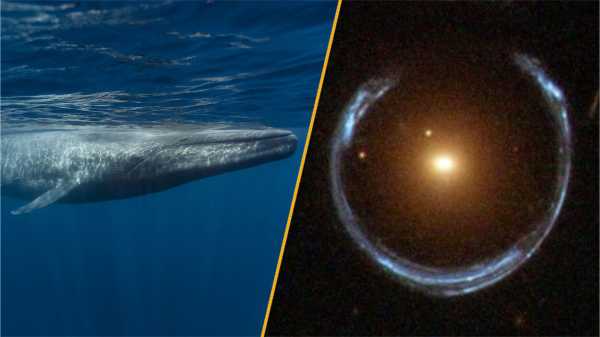
Science News This Week: Black Holes Galore and Blue Whales That Still Sing
—Climate action faces a new threat: pessimists who believe it is too late to act.
Life's Little MysteriesDo humans and chimpanzees really share 99% of their DNA?
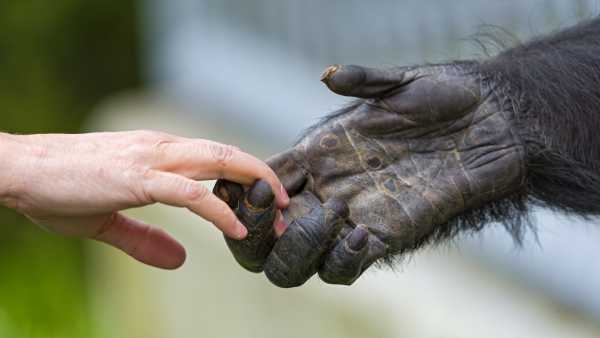
Humans and chimpanzees do share a lot of DNA, but that fact alone is not significant.
Humans and chimpanzees share nearly 99% of their genetic material: it's an oft-repeated truth about us and one of our closest living relatives, but is it true? It turns out it's not quite true, and even the comparison itself obscures a deeper truth about how DNA shapes humans and chimps in the first place.
— If you liked it, subscribe to our newsletter “Little Secrets of Life”.
Visible Time Crystals Created Scientists have created the first ever visible time crystals using light — and they could one day appear on $100 bills.
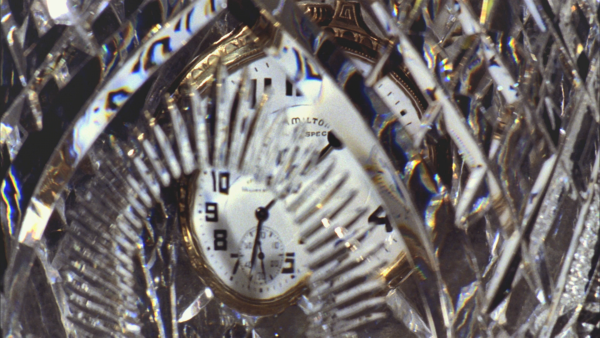
Scientists have created many time crystals, but this is the first time they have managed to make one visible to the human eye.
Time crystals, theorized only in 2012, have fascinated us since they were first created in 2016. Since then, scientists have reproduced this fascinating phenomenon in a variety of systems, none of which can be seen directly.
That has now changed with the announcement that scientists have created visible time crystals from the liquid crystals commonly used in LCD displays. This is not just an intriguing demonstration of the bizarre quantum mechanics of time crystals, but also a practical application that could find its way onto future high-denomination banknotes as a security feature against counterfeiting.
Find out more news from the field of physics and mathematics
— For the first time, scientists have observed the movement of a single electron during a chemical reaction.
— Meet the neglectons: previously unnoticed particles that could revolutionize quantum computing.
—Modeling shows that lightning on Earth is caused by a powerful chain reaction originating from space.
Also in science news this week
— New reconstructions reveal the piercing eyes of people who lived 2,500 years ago in a mysterious Indian civilization.
— “Our hearts stopped”: Scientists have discovered that baby pterosaurs died during a powerful Jurassic storm 150 million years ago.
— Microsoft's new light computer is based on 80-year-old technology — it could make artificial intelligence 100 times more efficient.
—Diagnostic dilemma: A woman constantly tasted bleach, and doctors discovered a hidden cause in her blood.
Science Long Read: A camera trap in Chile has captured strange lights flashing in the wild. Researchers are trying to explain them.
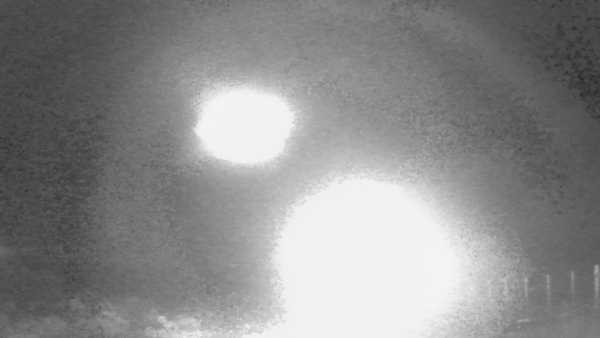
Strange lights spotted in Chile have prompted a scientific investigation.
Just after midnight, in the silence and darkness of Chile's remote Southern Patagonia region, a camera trap captured something inexplicable: three photographs of bright lights dancing down in front of the lens.
Could these be artifacts captured on camera, ball lightning, or even UFOs? Live Science reported on the search for answers.
Something for the weekend
If you're looking for something to do this weekend, here are some of the best quizzes, skywatching guides, and crossword puzzles published this week.
'We have effectively destroyed our entire capacity to respond to a pandemic,' says leading epidemiologist Michael Osterholm [Interview]
—Live Science Crossword #9: Hooded King Snake – 14 Horizontal [Crossword]
— Have you had a COVID vaccine this year? [Poll]
Science in Pictures: Interstellar Comet 3I/ATLAS May Be Bright Green, Amazing New Photos Show
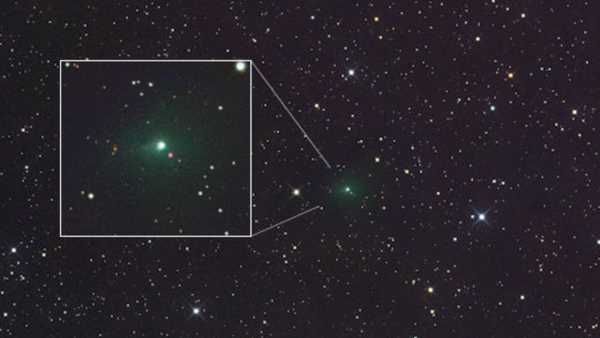
This is the first and only photo of 3I/ATLAS glowing green. Scientists are debating why.
New images of Comet 3I/ATLAS taken during the recent total eclipse of the “blood moon” appear to show a surprising development: a comet from outside our solar system may turn green.
The most common explanation for this strange change (and no, it's not the little green men) is the presence of diatomic carbon in the comet's coma, its fuzzy temporary atmosphere. However, since diatomic carbon has not yet been detected by spectroscopic observations, the jury is still out. Astronomers will need to take more photographs to confirm the effect and figure out what's causing it.
Follow Live Science on social media
Want more science news? Follow our Live Science channel on WhatsApp to stay up to date with the latest discoveries. It’s the best way to get expert insights anywhere. But if you’re not on WhatsApp, we’re also on Facebook, X (formerly Twitter), Flipboard, Instagram, TikTok, Bluesky, and LinkedIn.
TOPICS Science News This Week

Ben Turner, Social Links, Navigation, Acting News Editor
Ben Turner is a British writer and editor at Live Science. He covers physics and astronomy, technology, and climate change. He graduated with a degree in particle physics from University College London before becoming a journalist. When not writing, Ben enjoys reading literature, playing guitar, and embarrassing himself at chess.
You must verify your public display name before commenting.
Please log out and log back in. You will then be prompted to enter a display name.
Exit Read more
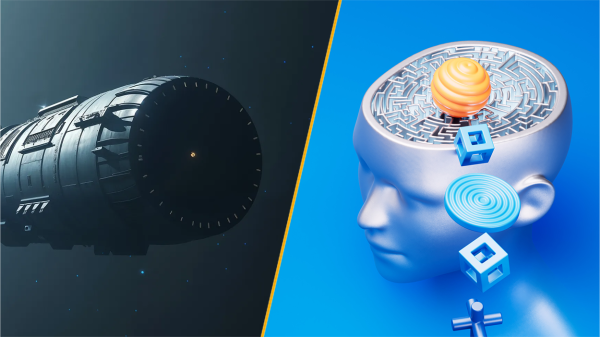
Science News This Week: A 400-Year Journey to Alpha Centauri and the Evil AI That Might Make Us Think About It
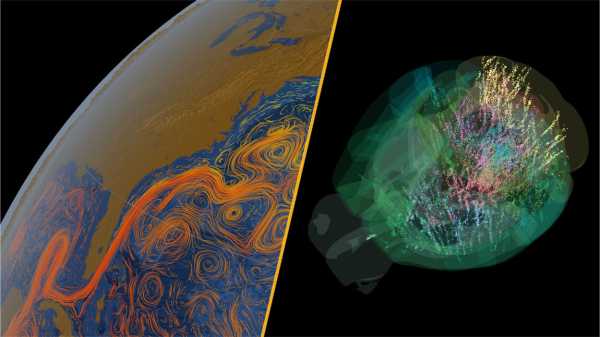
This week's science news: A key Atlantic current is nearing its end, the world's largest iceberg breaks apart, and a mouse brain is redefining neuroscience.
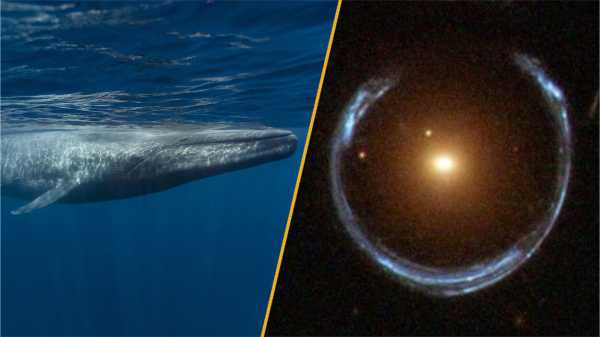
Science News This Week: Black Holes Galore and Blue Whales That Still Sing
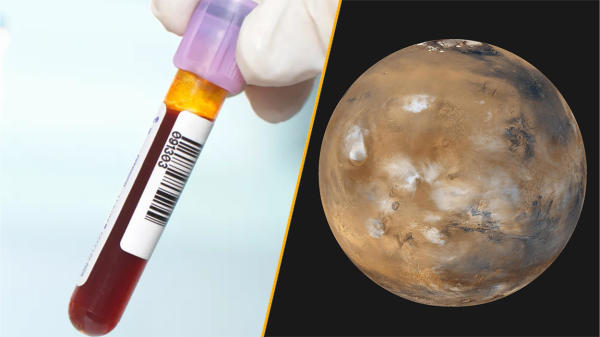
Unique New Blood Type and 'Spider Web' on Mars
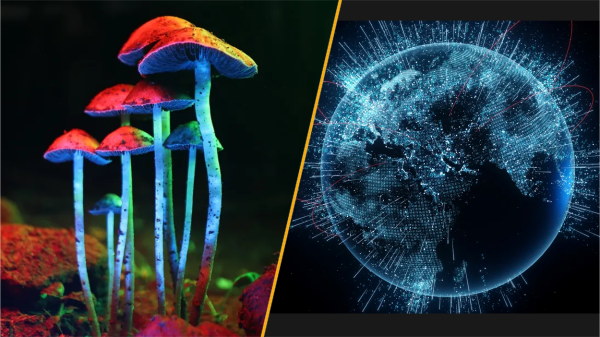
“Rejuvenating” Magic Mushrooms and Record Internet Speeds
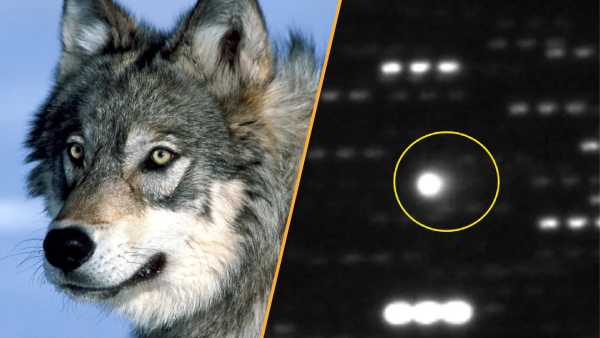
Wolves Help Restore Trees in Yellowstone and Largest Interstellar Object Ever Spotted
Latest Surgery News
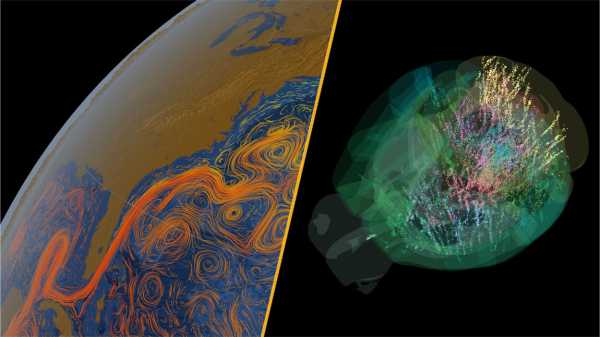
This week's science news: A key Atlantic current is nearing its end, the world's largest iceberg breaks apart, and a mouse brain is redefining neuroscience.
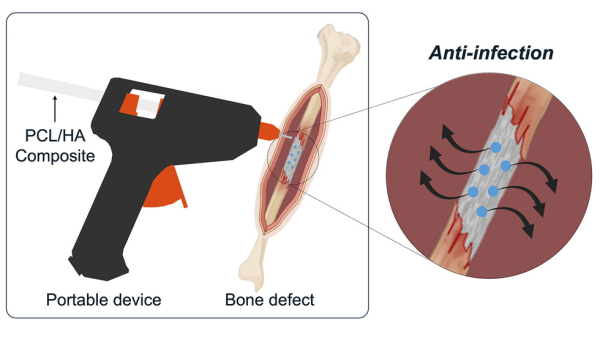
Scientists have developed a “glue gun” that 3D prints bone grafts directly onto fractures
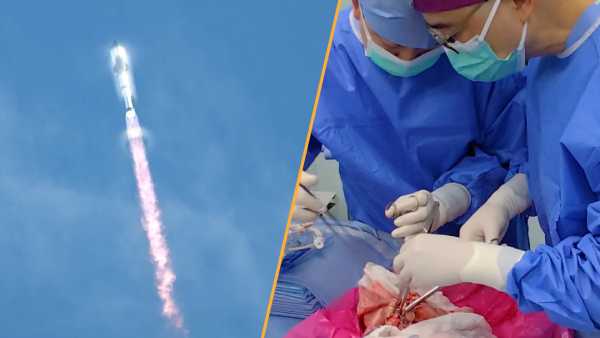
This week's science news: World's first pig-to-human lung transplant and successful SpaceX Starship test flight
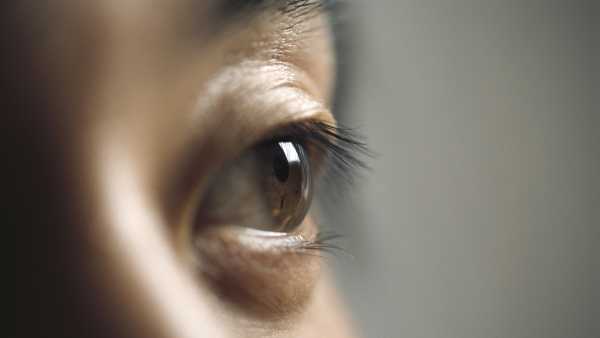
First trials of new non-laser eye treatment show promising results
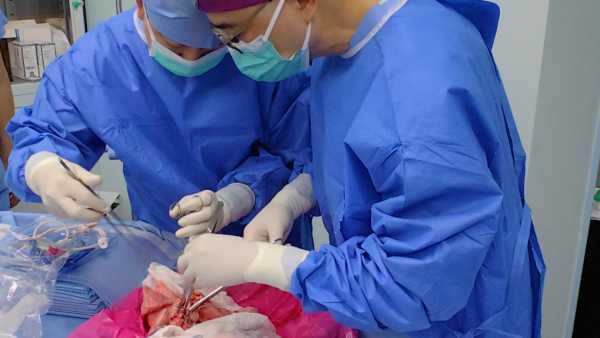
China has attempted the first pig-to-human lung transplant in a brain-dead person

Are women less sensitive to anesthesia than men?
Latest news

Have you gotten the COVID vaccine this year?

This week's science news: NASA finds compelling evidence of life on Mars, and scientists invent visible time crystals.
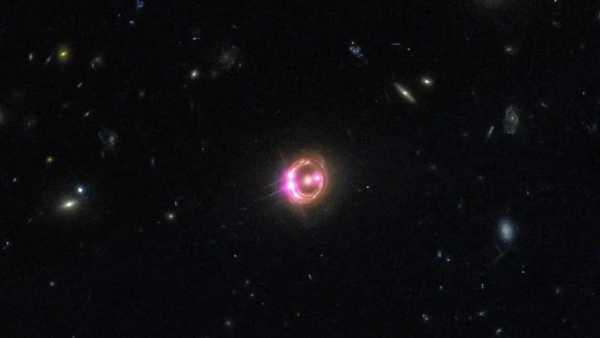
Astronomers use rare 'double zoom' to see black hole's corona in unprecedented detail

Bolivia's 350-Year-Old Mummified Head Is Not What It Seems
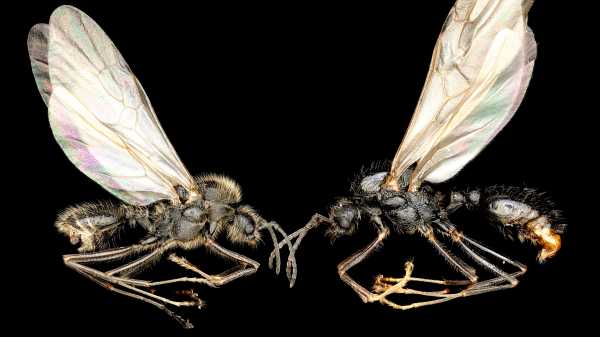
'Almost like science fiction': European ant is the first known animal to clone members of another species.
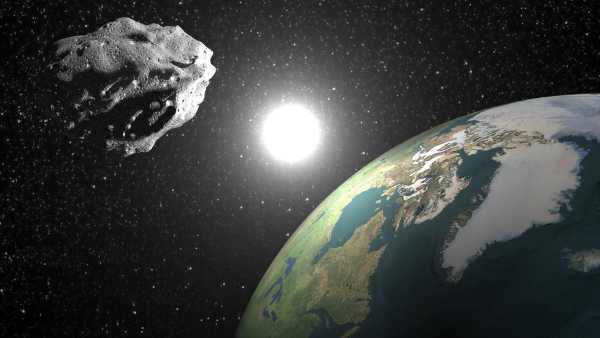
New 'quasi-moon' discovered in near-Earth orbit that may have been hidden there for decades
LATEST ARTICLES
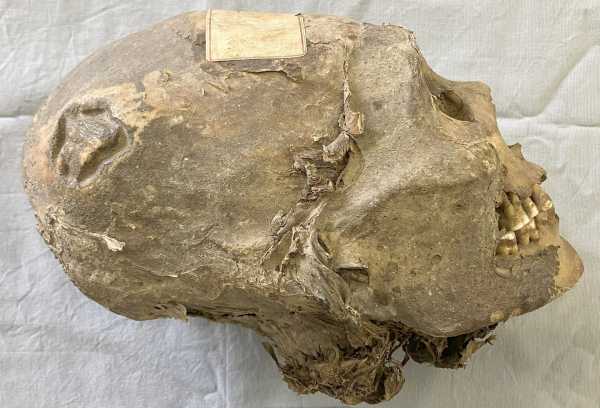
1,350-Year-Old Mummified Head From Bolivia Is Not What It Seems
Live Science is part of Future US Inc., an international media group and leading digital publisher. Visit our corporate website.
- About Us
- Contact Future experts
- Terms and Conditions
- Privacy Policy
- Cookie Policy
- Accessibility Statement
- Advertise with us
- Web Notifications
- Career
- Editorial Standards
- How to present history to us
© Future US, Inc. Full 7th Floor, 130 West 42nd Street, New York, NY 10036.
var dfp_config = { “site_platform”: “vanilla”, “keywords”: “type-regular,van_sticky_side_nav,exclude-from-syndication,no-in-article-video,serversidehawk,van-enable-adviser-
Sourse: www.livescience.com





